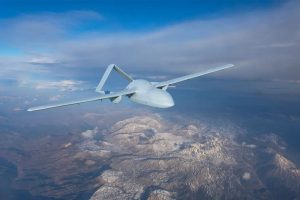 In an era where unmanned aerial vehicles (UAVs) play an increasingly vital role in defense and security operations, ensuring the integrity and confidentiality of communication links between drones and ground control stations is paramount. This article explores the critical importance of secure communication protocols in military drone systems, emphasizing the need to prevent interception, hacking, and signal jamming to safeguard sensitive mission data.
In an era where unmanned aerial vehicles (UAVs) play an increasingly vital role in defense and security operations, ensuring the integrity and confidentiality of communication links between drones and ground control stations is paramount. This article explores the critical importance of secure communication protocols in military drone systems, emphasizing the need to prevent interception, hacking, and signal jamming to safeguard sensitive mission data.
Understanding the Threat Landscape: The evolving threat landscape poses significant challenges to the security of military drone communications. Adversaries, ranging from state actors to non-state actors, employ sophisticated techniques to exploit vulnerabilities in communication channels, potentially compromising mission effectiveness and endangering personnel. Understanding these threats is crucial for developing robust defense mechanisms.
 Encryption Techniques for Data Protection: One of the primary means of securing drone communications is through encryption techniques. Advanced cryptographic algorithms are employed to encode data transmitted between drones and ground stations, rendering it unintelligible to unauthorized parties. End-to-end encryption ensures that only authorized recipients possess the decryption keys, mitigating the risk of data interception and tampering.
Encryption Techniques for Data Protection: One of the primary means of securing drone communications is through encryption techniques. Advanced cryptographic algorithms are employed to encode data transmitted between drones and ground stations, rendering it unintelligible to unauthorized parties. End-to-end encryption ensures that only authorized recipients possess the decryption keys, mitigating the risk of data interception and tampering.
Frequency-Hopping Spread Spectrum (FHSS) Technology: Frequency-Hopping Spread Spectrum (FHSS) technology represents a cornerstone in the arsenal of measures employed to secure military drone communications. By rapidly switching between multiple frequency channels within a predefined spectrum, FHSS mitigates the risk of signal interception and jamming, thereby enhancing the resilience of communication links in hostile environments.
 Challenges and Solutions: Despite the efficacy of encryption and FHSS technology, challenges persist in maintaining secure drone communications. Environmental factors, such as terrain and atmospheric conditions, can impact signal strength and reliability, necessitating adaptive communication protocols. Additionally, the proliferation of sophisticated cyber threats underscores the need for continuous innovation and investment in cybersecurity measures.
Challenges and Solutions: Despite the efficacy of encryption and FHSS technology, challenges persist in maintaining secure drone communications. Environmental factors, such as terrain and atmospheric conditions, can impact signal strength and reliability, necessitating adaptive communication protocols. Additionally, the proliferation of sophisticated cyber threats underscores the need for continuous innovation and investment in cybersecurity measures.
Integration with Command and Control Systems: Effective integration of secure communication protocols with command and control (C2) systems is essential for seamless coordination of military drone operations. C2 systems facilitate real-time data exchange, mission planning, and decision-making, relying on secure communication links to relay critical information between operators and unmanned platforms.
Securing the Future of Military Drone Operations: In conclusion, the security of communication links between military drones and ground control stations is a foundational pillar of modern defense and security strategies. By leveraging encryption techniques, FHSS technology, and robust cybersecurity measures, stakeholders can mitigate the risk of unauthorized access, interception, and disruption, ensuring the integrity and confidentiality of mission-critical data in the skies. As threats continue to evolve, ongoing research and development efforts are essential to stay ahead of adversaries and safeguard the future of military drone operations.
Secure Communication Protocols for Military Drones: Address the critical importance of secure communication links between drones and ground control stations to prevent interception, hacking, and signal jamming, highlighting encryption techniques and frequency-hopping spread spectrum (FHSS) technology.























































